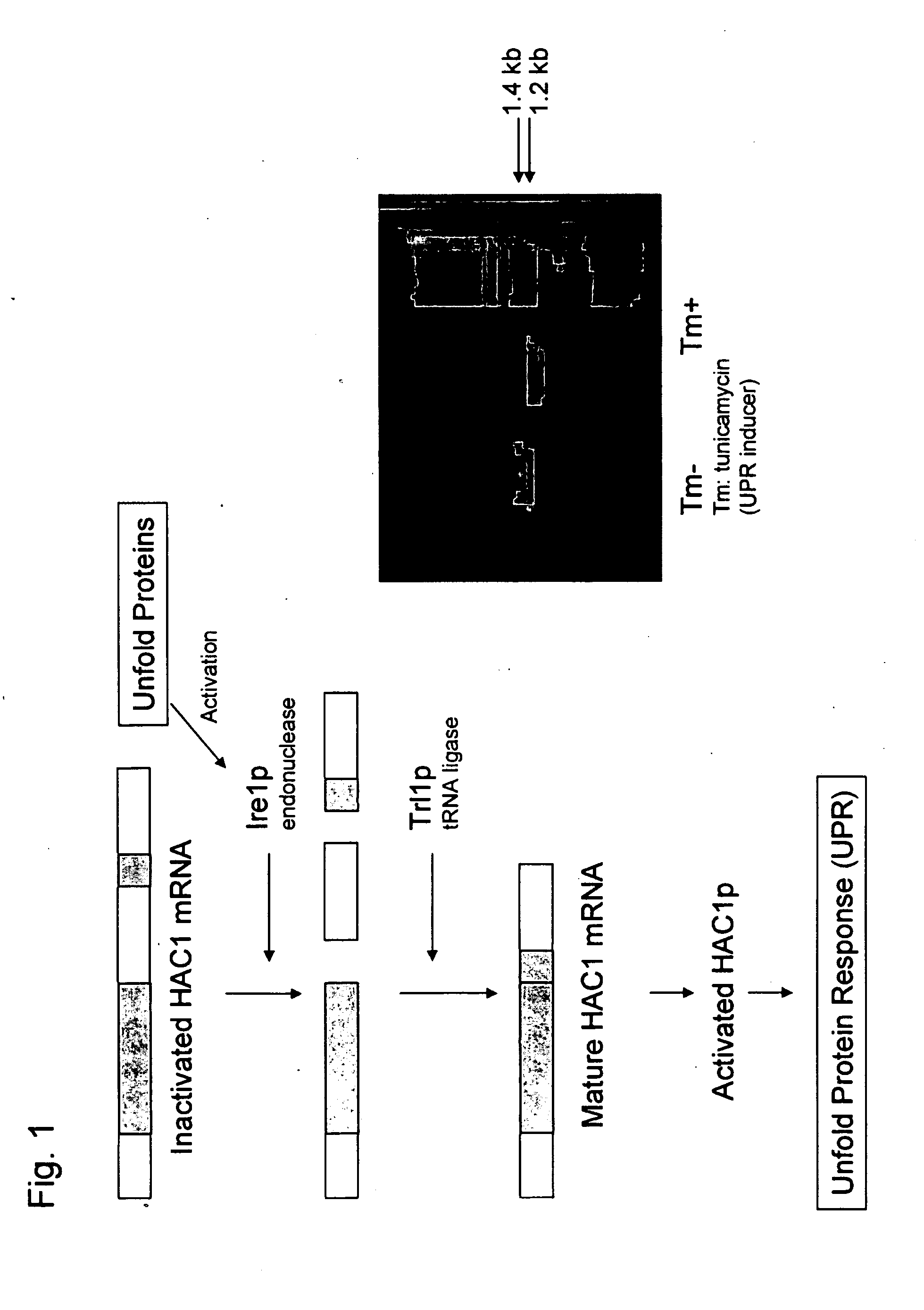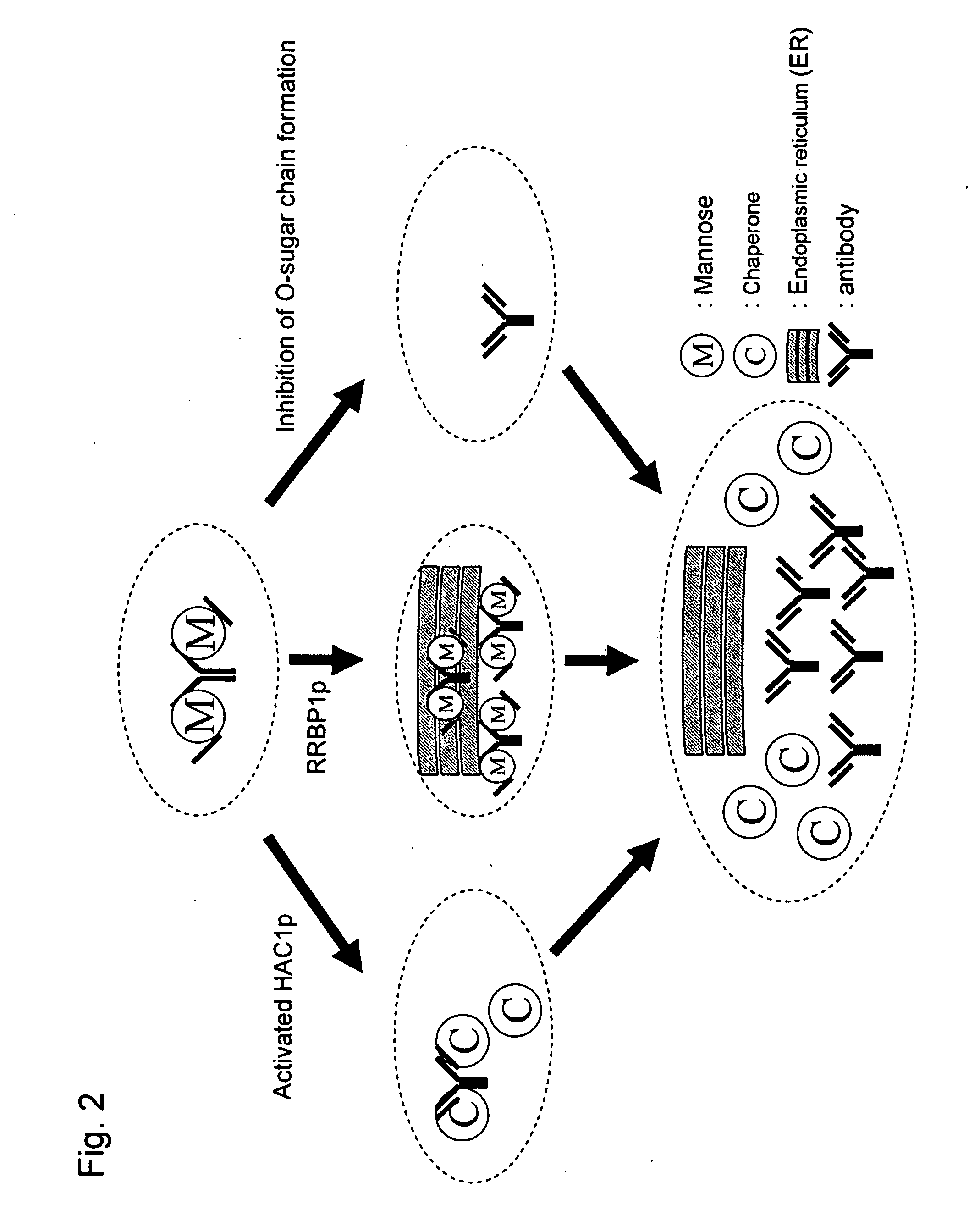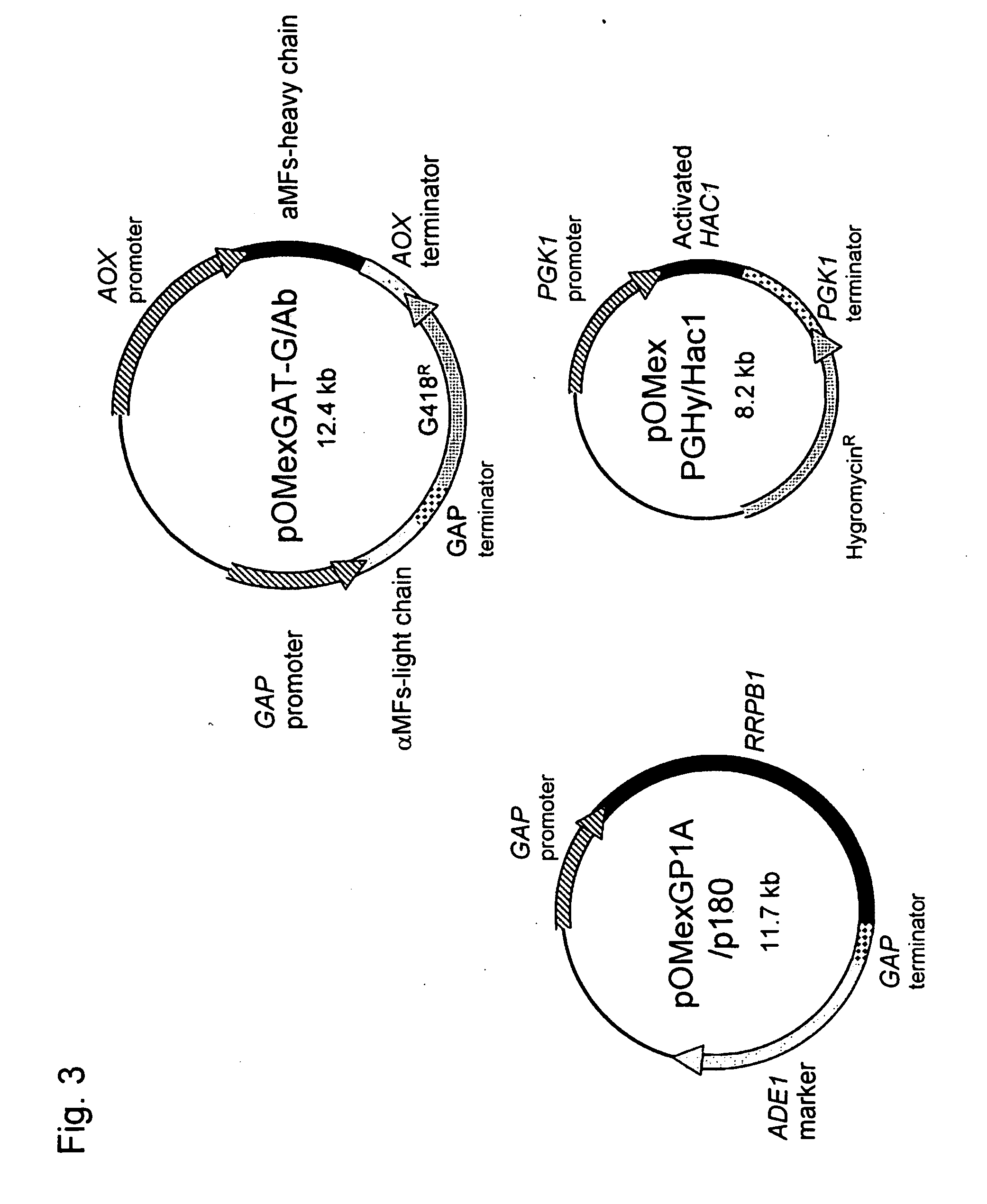Method for high-level secretory production of protein
- Summary
- Abstract
- Description
- Claims
- Application Information
AI Technical Summary
Benefits of technology
Problems solved by technology
Method used
Image
Examples
example 1
Construction of Foreign Gene-Expressing Plasmid
(1) Construction of Foreign Gene-Expressing Tandem Vector Comprising the AOX1 Gene Promoter Having the G418-Resistant Gene as the Marker, the Terminator Cassette and the GAP Gene Promoter, and the Terminator Cassette
[0189]pOMex3G and pOMexGP1U disclosed in WO 2003 / 091431 were used as materials. pOMex3G was cleaved with XbaI and blunt-ended, followed by introduction of the SpeI linker. The resulting vector was designated as pOMex3GXS. Separately, pOMexGP1U was cleaved with EcoT22I and blunt-ended, followed by introduction of the ApaI linker. The resulting vector was designated as pOMexGP1UTA. pOMexGP1UTA was digested with HindIII and KpnI and blunt-ended. Thereafter, the isolated fragment of about 2.0 kb containing a GAP promoter and a terminator was digested with ApaI and then introduced into the blunt-ended pOMex3GXS. The resulting vector was designated as pOMexGAT-G. pOMexGAT-G is a tandem vector that comprises the SpeI-BamHI site wit...
example 2
Construction of Antibody Gene Expression Vector
[0199]In order to clone a secretion signal of MF alpha1 (GenBank accession number: P01149) derived from S. cerevisiae (hereafter referred to as the “aMF secretion signal”), the following primers were synthesized.
Sp-aMFs-F:5′-ACTAGTATGAGATTTCCTTCAATTT-3′(SEQ ID NO: 9)Sl-aMFs-F:5′-GTCGACATGAGATTTCCTTCAATTT-3′(SEQ ID NO: 10)Xb-aMFs-R:5′-AGCTTCAGCCTCTCTTTTATCTAGAGA-3′(SEQ ID NO: 11)
[0200]Genome DNA of S. cerevisiae obtained in the same manner as described above was used as a template to carry out PCR using the Sp-aMFs-F primer (SEQ ID NO: 9) and Xb-aMFs-R primer (SEQ ID NO: 11) at 94° C. for 30 seconds, 55° C. for 1 minute, and 72° C. for 30 seconds, and this cycle was repeated 20 times. Also, PCR was carried out using the Sl-aMFs-F primer (SEQ ID NO: 10) and the Xb-aMFs-R primer (SEQ ID NO: 11) at 94° C. for 30 seconds, 55° C. for 1 minute, and 72° C. for 30 seconds, and this cycle was repeated 20 times. The amplified DNA fragments of appr...
example 3
Construction of Activated HAC1 Gene Expression Vector of O. minuta
[0203]The activated HAC1 gene was obtained by culturing cells (O. minuta YK2-3 strains) in YPD medium at 27° C. for 12 hours and adding tunicamycin to a concentration of 10 μg / ml in the medium so as to induce UPR. Culture was carried out in a tunicamycin-containing medium for an additional 12 hours. After the cells were collected, mRNA was prepared using the Yeastar RNA kit (ZYMO research).
[0204]The obtained mRNA was subjected to DNase treatment using DNase I Amplification Grade (Invitrogen). cDNA was synthesized from the mRNA using Super script III First-Strand Synthesis for RT (Invitrogen). The resulting cDNA was amplified via PCR using the HAC1-1 DNA primer (SEQ ID NO: 16) and the HAC1-12 primer (SEQ ID NO: 17) described below at 94° C. for 30 seconds, 52° C. for 30 seconds, and 72° C. for 1 minute, and this cycle was repeated 30 times. The amplified products were cloned into pCR2.1-TOPO (Invitrogen). Thereafter, ...
PUM
| Property | Measurement | Unit |
|---|---|---|
| Fraction | aaaaa | aaaaa |
Abstract
Description
Claims
Application Information
 Login to View More
Login to View More - R&D
- Intellectual Property
- Life Sciences
- Materials
- Tech Scout
- Unparalleled Data Quality
- Higher Quality Content
- 60% Fewer Hallucinations
Browse by: Latest US Patents, China's latest patents, Technical Efficacy Thesaurus, Application Domain, Technology Topic, Popular Technical Reports.
© 2025 PatSnap. All rights reserved.Legal|Privacy policy|Modern Slavery Act Transparency Statement|Sitemap|About US| Contact US: help@patsnap.com



